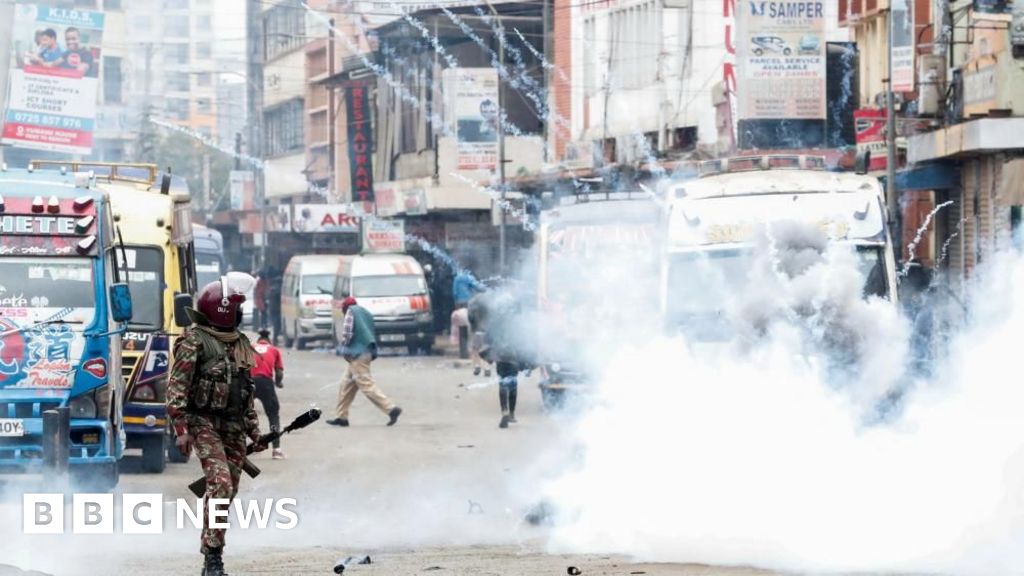Kenyan police used tear gas to disperse small groups of anti-government demonstrators in the capital Nairobi. They had demanded better governance at the swearing-in of a new cabinet.
Shops in the city were closed and public transport was paralyzed, while police set up roadblocks on main roads to prevent protesters from entering the central business district.
The demonstrations are a continuation of months of protests against the taxes, which have now culminated in calls for President William Ruto to resign.
The youth-led protests have already forced the president to withdraw planned tax increases and dissolve his cabinet.
Mr Ruto has appointed senior opposition officials into his cabinet to appease growing public anger against his government.
He handed over four positions to the opposition – including the powerful finance and energy ministries.
The new cabinet was sworn in early Thursday morning amid heavy security in front of the president’s official residence, the State House, after protesters threatened to storm it.
During the ceremony, Mr Ruto said the new cabinet “cannot and must not let Kenyans down”.
He described his new team as an “alliance of rivals” in a country that has long suffered from “factional and sectarian competition.”
“Now more than ever, it is clear that we are united by our shared commitment to a prosperous Kenya that serves us all,” Mr Ruto added.
About half of the ministers belonged to his previous cabinet. This move has further angered protesters who are demanding a complete break with the past.
They had rejected the new cabinet on the grounds that it would only lead to a continuation of the agreements within Kenya’s political elite.
Riot police have been patrolling the streets of Nairobi since Thursday morning, but compared to previous protests, such as the arson attack on Parliament, only a few dozen demonstrators turned up.
Several people were arrested when police dispersed small groups of youths who were trying to gather for the protest rally – called “Nane Nane March”, which means “March of August 8th” in Swahili.
The streets of Nairobi were largely quiet, with only a few people going about their daily business.
Major towns, including the lakeside city of Kisumu – an opposition stronghold – and Eldoret – Mr Ruto’s hometown – which had previously seen protests, remained calm.
On Wednesday, acting police chief Gilbert Masengeli warned that “criminals” intended to infiltrate the demonstrations and urged people to avoid “protected areas” such as the main international airport and State House.
According to the state-funded Kenyan Human Rights Commission, more than 50 people have died since the demonstrations began in June.
Former police chief Japhet Koome, who was accused of using brutal methods in dealing with the demonstrators, resigned last month.
This did not appease the protesters who demanded justice for the dead – and they announced that they would continue to demonstrate until the president resigned.
Mr Ruto became president by campaigning on promises to improve the lives of Kenya’s poor – especially the young people known as “hustlers” – after narrowly defeating his main rival Raila Odinga in the 2022 election.
But now he is torn between the demands of hustlers struggling with the cost of living crisis and the demands of international lenders demanding that his government pay off the enormous national debt.

